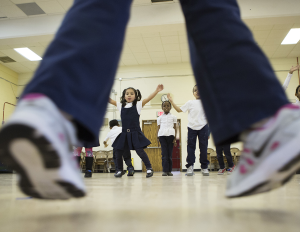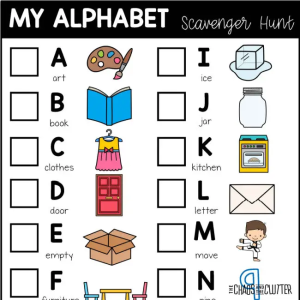As a preschool teacher, finding engaging and age-appropriate activities that promote learning in various areas such as cognitive, social, emotional, and physical development is crucial.
Playing games outside without equipment is a great way to encourage children to explore their environment, learn new skills, and have fun with their peers.
Here are effective & fun activity ideas on Games To Play Outside Without Equipment for Kids.
Simon Says:

This classic game encourages children to follow directions and improves their listening skills. The teacher can call out different actions, such as “Simon says hop on one foot” or “Simon says touch your nose.” The children must do the action only if the teacher says “Simon says” before the instruction.
Red Light, Green Light

This game teaches children to follow directions and control their movements. One child is chosen to be the “stoplight” and stands at one end of the play area while the other children stand at the other. The stoplight calls out “green light” for the children to move and “red light” to stop. The first child to reach the stoplight becomes the new stoplight.
Duck, Duck, Goose:

This game promotes socialization and physical activity. Children sit in a circle, and one child walks around tapping each child on the head saying “duck” until they tap a child and say “goose.” The goose must then chase the first child around the circle and try to tag them before they make it back to the goose’s spot.
Animal Charades:

This game encourages creativity and imagination. One child acts out an animal while the other children guess what animal they are pretending to be.
Hide and Seek:

This classic game promotes physical activity and spatial awareness. One child is chosen to be “it” and closes their eyes while the other children hide. The child who is “it” then searches for the other children until they are all found.
Mother, May I?:

This game promotes decision-making skills and listening skills. One child is chosen to be “Mother” and stands at one end of the play area while the other children stand at the other. Each child takes turns asking “Mother, may I?” for a specific movement, such as taking three big steps forward or hopping on one foot. “Mother” responds with either “yes, you may” or “no, you may not.” The first child to reach “Mother” becomes the new “Mother.”
Hopscotch:

This game promotes physical activity and coordination. Draw a hopscotch board on the ground with chalk and have children take turns hopping on one foot through the numbered squares.
Four Corners:

This game promotes listening skills and socialization. Four children stand in different corners of the play area, and the rest close their eyes. One child then calls out a corner, and all the children in that corner are out. The game continues until only one child is left.
Tag:

This classic game promotes physical activity and spatial awareness. One child is chosen to be “it” and chases the other children, trying to tag them. When a child is tagged, they become “it.”
Follow the Leader:

This game promotes listening skills and physical activity. One child is chosen to be the leader and performs different movements, such as hopping on one foot or spinning around. The other children must then follow the leader’s movements.
Freeze Dance:

This game promotes physical activity and listening skills. Play music and have children dance around, then pause the music and have them freeze. Anyone who moves after the music stops is out.
Hot Potato:

This game promotes physical activity and hand-eye coordination. Pass a softball or stuffed animal around a circle while music plays. Whoever is holding the object when the music stops is out.
Sack Race:

This game promotes physical activity and balance. Have children stand inside a burlap sack or pillowcase and hop to the finish line.
What Time Is It, Mr. Fox?:

This game promotes listening skills and physical activity. One child is chosen to be Mr. Fox and stands at one end of the play area while the other children stand at the other end. The children take turns asking “What time is it, Mr. Fox?” and Mr. Fox responds with a time, such as “3 o’clock.” The children then take that number of steps forward, and the game continues until Mr. Fox says “Midnight” and chases the other children.
Crab Walk:

This game promotes physical activity and coordination. Have children walk on their hands and feet with their bellies facing up and their heads facing forward.
Balloon Volleyball:

This game promotes physical activity and hand-eye coordination. Use a balloon as a ball and have children hit it back and forth over a “net” made of a rope or imaginary line.
Alphabet Scavenger Hunt:

This game promotes cognitive skills and exploration. Have children search for objects outside that start with each letter of the alphabet.
Color Scavenger Hunt:

This game promotes cognitive skills and observation. Have children search for objects outside that match different colors.
Bubble Tag:

This game promotes physical activity and socialization. Use a bubble wand to blow bubbles and have children try to pop each other’s bubbles.
Tug of War:

This game promotes physical activity and teamwork. Divide children into two teams and have them tug on a rope until one team pulls the other over a designated line.
Related: 20 Waiting Games for Kids
Related: 20 Indoor Physical Activities for 3 5 Year Olds
Related: 10 Fun and Engaging Tag Game for Kindergarten Kids
Conclusion
In conclusion, playing games outside without equipment is a great way to teach preschool students various skills while having fun.
These ten activity ideas are engaging, age-appropriate, and promote learning in various areas such as cognitive, social, emotional, and physical development.

